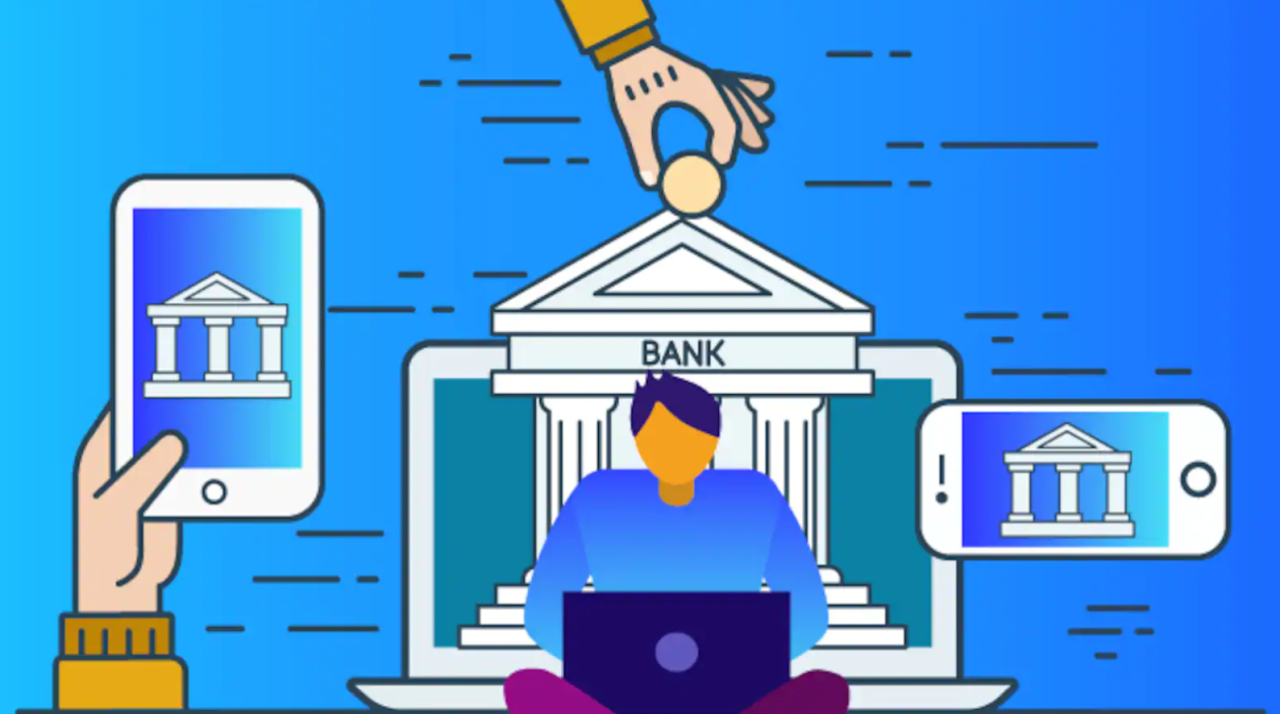In the rapidly evolving financial landscape, SRP Coin is emerging as a pivotal player, seamlessly bridging the gap between traditional and digital finance. As we move towards a more digitized world, understanding the synergy between these two financial paradigms is crucial. This blog delves into how SRP Coin is facilitating this integration, offering enhanced financial accessibility, efficiency, and security.
Understanding Traditional Finance
Traditional finance refers to the conventional financial systems and institutions that have been in place for centuries. These include banks, stock markets, and regulatory bodies that govern financial transactions and investments.
Definition and Key Features of Traditional Finance
Traditional finance is characterized by its reliance on physical infrastructure and centralized control. Key features include:
- Centralized Authority: Banks and financial institutions act as intermediaries in transactions.
- Regulation and Compliance: Heavily regulated by government bodies to ensure stability and protect consumers.
- Physical Branches: Requires physical presence for many transactions, such as opening accounts or applying for loans.
Historical Development and Current State
The roots of traditional finance can be traced back to ancient civilizations where money and trade were first formalized. Over centuries, these systems have evolved to become sophisticated networks that manage global economies. Today, traditional finance is robust but often criticized for being slow, expensive, and inaccessible to certain demographics.
Strengths and Limitations of Traditional Financial Systems
Strengths:
- Stability: Well-established regulatory frameworks provide financial stability.
- Trust: Long history and established institutions foster trust among users.
- Insurance: Deposits are often insured, providing security to account holders.
Limitations:
- Accessibility: Many people, especially in developing regions, lack access to banking services.
- Cost: High fees for transactions and account maintenance.
- Speed: Slow processing times for transactions and settlements.
The Rise of Digital Finance
Digital finance leverages technology to provide financial services more efficiently and inclusively. This sector has grown rapidly over the past decade, transforming how people interact with money.
Definition and Key Features of Digital Finance
Digital finance encompasses online banking, mobile payments, cryptocurrencies, and blockchain technology. Key features include:
- Decentralization: Reduced reliance on central authorities.
- Accessibility: Accessible from anywhere with an internet connection.
- Innovation: Continuous development of new financial products and services.
Evolution of Digital Financial Technologies
The advent of the internet and mobile technology has revolutionized finance. Innovations like blockchain and cryptocurrencies have further disrupted traditional models, offering decentralized and transparent alternatives.
Advantages and Challenges of Digital Finance
Advantages:
- Efficiency: Faster transaction processing and lower costs.
- Inclusion: Provides access to financial services for unbanked populations.
- Transparency: Blockchain technology ensures transparent and immutable transaction records.
Challenges:
- Regulation: Lack of clear regulatory frameworks in many regions.
- Security: Vulnerability to cyber attacks and fraud.
- Adoption: Resistance from users accustomed to traditional systems.
SRP Coin: An Overview
SRP Coin is a digital currency designed to bridge the gap between traditional and digital finance, offering a seamless, efficient, and secure financial experience.
Introduction to SRP Coin and Its Core Technology
SRP Coin operates on a robust blockchain platform, ensuring transparency, security, and decentralization. Its core technology integrates advanced cryptographic techniques to protect user data and transaction integrity.
Unique Features of SRP Coin
- Fast Transactions: Near-instantaneous transaction processing.
- Low Fees: Significantly lower transaction costs compared to traditional banking.
- Scalability: Capable of handling a high volume of transactions efficiently.
- Eco-friendly: Utilizes energy-efficient consensus mechanisms.
SRP Coin’s Mission and Vision in the Financial Landscape
SRP Coin aims to democratize finance by providing a bridge between traditional and digital systems. Its vision is to create a more inclusive financial ecosystem where everyone has access to affordable and secure financial services.
Bridging Traditional and Digital Finance with SRP Coin
SRP Coin plays a crucial role in, Bridging the Gap Between Traditional and Digital Finance.
How SRP Coin Integrates with Traditional Financial Systems
SRP Coin’s platform is designed to be interoperable with existing financial infrastructures. It enables seamless integration with banks and financial institutions, allowing users to easily transition between traditional and digital finance.
The Role of SRP Coin in Enhancing Financial Accessibility
By providing a decentralized platform, SRP Coin makes financial services accessible to underserved populations. This includes facilitating cross-border transactions, reducing reliance on physical banking infrastructure, and offering financial services to the unbanked.
SRP Coin’s Approach to Security and Regulatory Compliance
Security and compliance are at the forefront of SRP Coin’s operations. The platform employs state-of-the-art encryption and adheres to regulatory standards to protect users and ensure legal compliance.
Benefits of SRP Coin in Bridging the Financial Gap
SRP Coin offers numerous benefits that enhance the integration of traditional and digital finance.
Increased Financial Inclusion and Accessibility
SRP Coin’s decentralized nature and low-cost transactions make it accessible to people in remote and underserved regions. This promotes financial inclusion by offering banking services to those without access to traditional banks.
Reduced Transaction Costs and Increased Efficiency
Traditional financial transactions often involve high fees and lengthy processing times. SRP Coin reduces these costs and speeds up transactions, making financial operations more efficient and cost-effective.
Enhanced Security and Transparency
The blockchain technology underlying SRP Coin ensures that all transactions are secure and transparent. This reduces the risk of fraud and enhances trust in the financial system.
Case Studies and Real-World Applications
Examining real-world applications of SRP Coin demonstrates its impact on bridging traditional and digital finance.
Examples of SRP Coin Facilitating Traditional and Digital Finance Integration
- Cross-Border Payments: SRP Coin is used to facilitate fast and low-cost cross-border transactions, bypassing traditional banking systems.
Success Stories from Businesses and Individuals Using SRP Coin
- Personal Finance: An individual in Southeast Asia uses SRP Coin to save and invest, taking advantage of its low transaction costs and high security.
Impact on Financial Markets and Economies
SRP Coin’s integration into the financial system has led to more efficient markets and increased economic activity. It provides a reliable alternative to traditional banking, fostering economic growth and stability.
Challenges and Solutions
While SRP Coin offers many advantages, it also faces challenges that need to be addressed.
Regulatory Challenges and How SRP Coin Addresses Them
Navigating the regulatory landscape is a significant challenge for any digital currency. SRP Coin proactively engages with regulators to ensure compliance and work towards establishing clear guidelines for digital finance.
Technical Hurdles and SRP Coin’s Innovative Solutions
Scalability and interoperability are key technical challenges. SRP Coin continuously improves its technology to handle increasing transaction volumes and integrates with various financial systems to ensure smooth operations.
Overcoming Public Skepticism and Fostering Adoption
Public skepticism towards digital currencies can hinder adoption. SRP Coin focuses on education and transparency to build trust and demonstrate its value to potential users.
The Future of Finance with SRP Coin
The future of finance is being shaped by the integration of traditional and digital systems, with SRP Coin at the forefront of this transformation.
Predictions and Trends in the Financial Industry
Experts predict that digital currencies will become increasingly integrated into the global financial system. Trends such as decentralized finance (DePIN) and blockchain adoption are set to grow, with SRP Coin playing a crucial role.
SRP Coin’s Role in the Evolving Financial Ecosystem
SRP Coin is positioned to be a major player in the evolving financial ecosystem. Its focus on inclusivity, efficiency, and security will drive its adoption and integration into mainstream finance.
Long-term Vision and Goals for SRP Coin
SRP Coin aims to create a world where financial services are accessible to everyone, regardless of location or economic status. Its long-term goals include expanding its user base, enhancing its technology, and fostering global financial inclusion.
Conclusion
SRP Coin is revolutionizing the financial landscape by bridging the gap between traditional and digital finance. Its innovative approach enhances financial accessibility, reduces transaction costs, and ensures security and transparency. As we move towards a more digitized financial future, SRP Coin’s role will become increasingly vital. Embracing SRP Coin can lead to a more inclusive and efficient financial system for all.

 China
China Russia
Russia India
India









